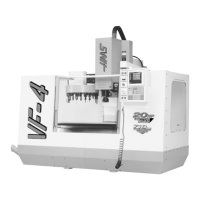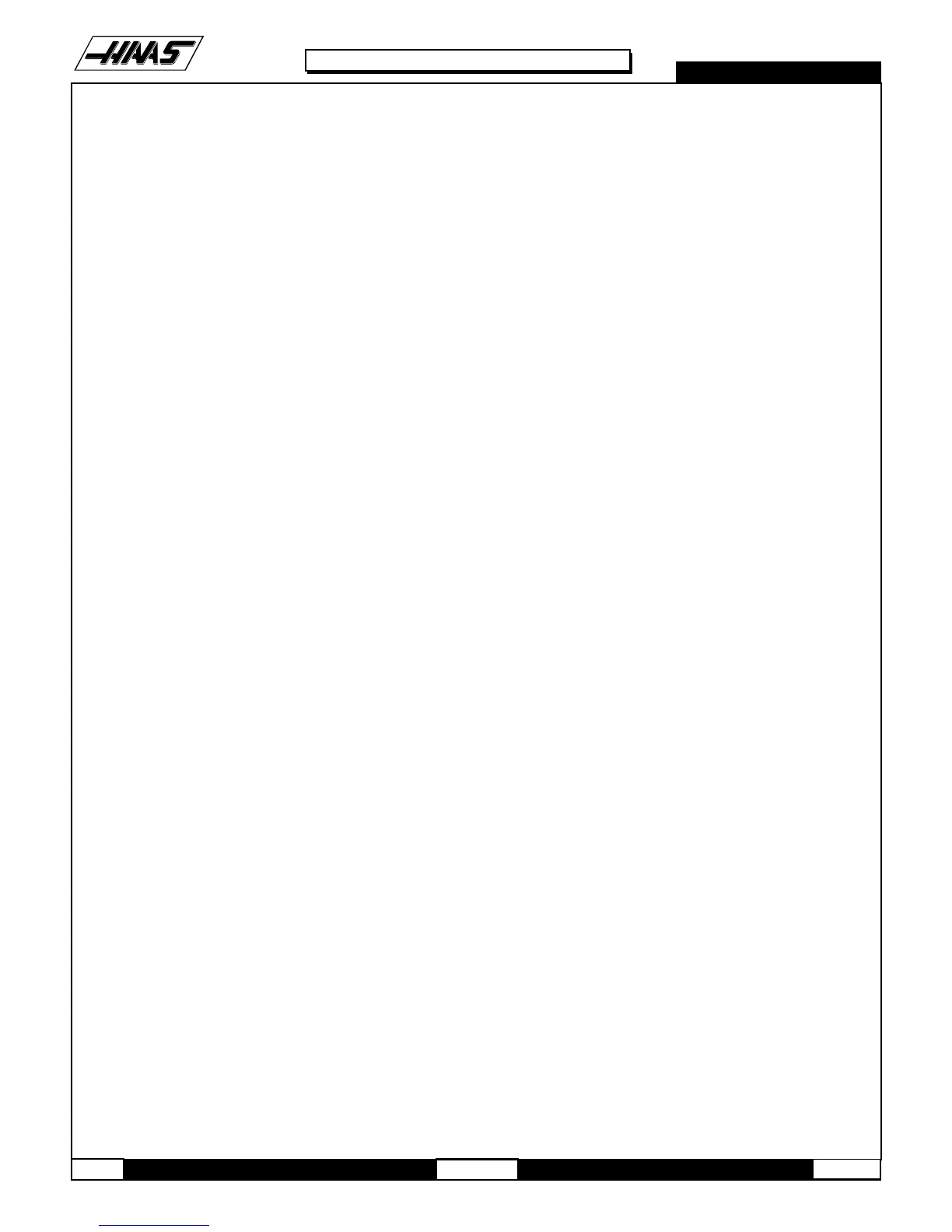96-8100 1-15-96
174
TECHNICAL REFERENCE
SERVICE
MANUAL
VF-SERIES
17. HYDRAULIC COUNTERBALANCE
The spindle head weight is balanced by the upward pull of a hydraulic cylinder. The hydraulic oil forces the piston to retract
into the cylinder body. The oil is then pressurized by a nitrogen resevoir. The system is self contained and passive (no pump
is required to maintain the lift). Normal Z-Axis of the gas/oil counter balance has the initial pressure to balance the weight
at full system volume, plus an additional 50-75 psi overcharge for longevity.
18. LUBRICATION SYSTEM
The lubrication system is a resistance type system which forces oil through metering units at each of the 16 lubricating
points within the machine. The system uses one metering unit at each of the lubricating points: one for each linear guide
pad, one for each lead screw and one for spindle lubrication. A single oil pump is used to lubricate the system. The pump
is powered only when the spindle and/or an axis moves. Once powered the pump cycles approximately 3.0 cc of oil every 30
minutes throughout the oil lines to the lube points. Every lube point receives approximately 1/16 of oil. The control
monitors this system through an internal level switch in the reservoir and and external pressure switch on the lube panel.
19. DIAGNOSTIC DATA
The ALARM MSGS display is the most important source of diagnostic data. At any time after the machine completes its
power-up sequence, it will either perform a requested function or stop with an alarm. Refer to Section 2.5 for a complete list
of alarms, their possible causes, and some corrective action.
If there is an electronics problem, the controller may not complete the power-up sequence and the CRT will remain blank. In
this case, there are two sources of diagnostic data; these are the audible beeper and the LEDs on the processor PCB. If the
audible beeper is alternating a ½ second beep, there is a problem with the main control program stored in EPROMs on the
processor PCB. If any of the processor electronics cannot be accessed correctly, the LEDs on the processor PCB will or will
not be lit.
If the machine powers up but has a fault in one of its power supplies, it may not be possible to flag an alarm condition. If this
happens, all motors will be kept off and the top left corner of the CRT will have the message:
POWER FAILURE ALARM
and all other functions of the control will be locked out.
When the machine is operating normally, a second push of the PARAM/DGNOS key will select the diagnostics display page.
The PAGE UP and PAGE DOWN keys are then used to select one of two different displays. These are for diagnostic purposes
only and the user will not normally need them. The diagnostic data consists of 32 discrete input signals, 32 discrete output
relays and several internal control signals. Each can have the value of 0 or 1. In addition, there are up to three analog data
displays and an optional spindle RPM display. Their number and functions are:

